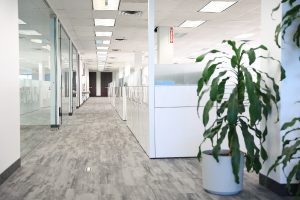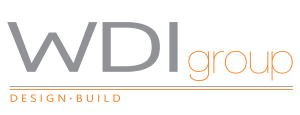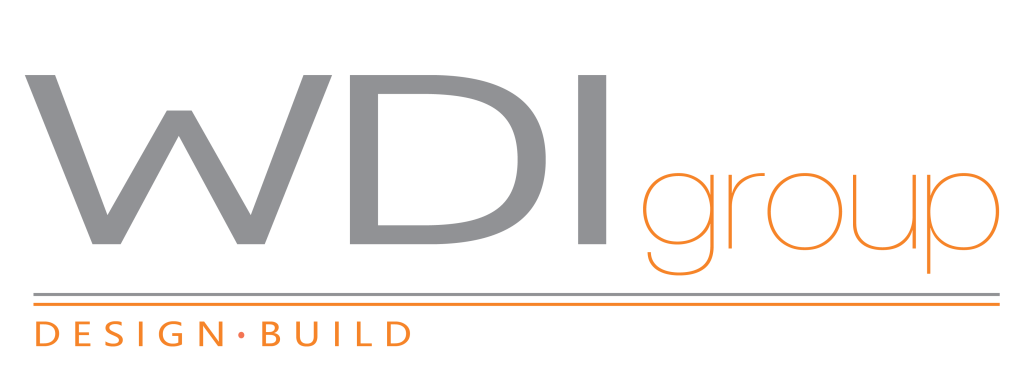Future Office Trends for 2025 and Beyond: Flexibility, Hybrid Work & More
Office design has never mattered more. As work continues to evolve, the physical workplace must evolve with it—supporting collaboration, employee wellness, and organizational agility. In 2025 and beyond, successful businesses will embrace office design trends that reflect the realities of hybrid work, flexible space needs, and employee expectations.
In this post, we’ll explore the key workplace design trends shaping the future of work. Whether you’re a facility manager planning upgrades, a COO managing multi-site spaces, or a business leader looking to retain top talent, these 2025 office design ideas will help you stay ahead.
Why Office Design Still Matters—Even in a Hybrid Era
With more people working from home part of the week, some business leaders question the value of the office at all. But the physical workspace still plays a crucial role. It’s where company culture is built, new ideas are sparked, and relationships are formed.
According to global workplace research, 80% of HR leaders believe hybrid models increase productivity, and 75% of employees report higher motivation under flexible arrangements. The office is no longer a mandatory location—it’s a strategic tool. And its design must reflect that shift.
Modern office design isn’t about cramming people into desks. It’s about creating intentional spaces where employees choose to be—because the experience is better than working from home.

Office Design Trends Shaping 2025
These are the top office design trends shaping workspaces in 2025 and beyond, with data to back them up.
1. Flexibility Is the New Foundation
Gone are the days of fixed layouts and static workstations. Today’s top-performing offices are fluid, modular, and ready to adapt.
Modular furniture and reconfigurable layouts allow for quick changes in seating, meeting space, or event setups. These adjustments don’t just support changing team needs—they improve ROI by making better use of square footage.
Studies show that flexible work arrangements can save employees up to $30,000/year in commuting and relocation costs, and businesses can repurpose square footage more efficiently with multi-use lounges and shared desk zones. As satellite offices and suburban hubs rise, flexibility will be essential.
What to try: movable walls, mobile whiteboards, multi-height tables, benching systems with sit/stand features.
2. The Rise of the Hybrid Workplace
Hybrid work is no longer a trend—it’s the norm. In North America, 53% of U.S. workers are in hybrid roles, and in Canada, hybrid models are increasingly adopted by large employers and government offices.
This means the office must offer something home doesn’t: spaces designed for collaboration, community, and focus.
Think tech-enabled meeting rooms, quiet zones for focused work, and comfortable lounges that feel more like a hotel lobby than a cubicle farm. Offices are now designed for purposeful presence—where people come in to connect, not to clock in.
A 2024 study by the London School of Economics found that public-sector employees working remotely were 12% more productive than their in-office peers. Offices of the future will embrace this flexibility—designing for connection, not control.
What to try: hybrid-friendly layouts, video-first boardrooms, “neighbourhood” seating clusters, no-assigned-desk policies.

3. Focus on Well-Being and Mental Health
A well-designed workplace isn’t just about productivity—it’s about people. In 2025, workplace wellness is baked into design strategy, not tacked on.
Biophilic design—which integrates natural light, plants, and natural materials—has proven health and performance benefits. One global study found that offices using biophilic elements see 15% higher well-being, 6–12% higher productivity, and 35% fewer absences.
Employees in these spaces also take fewer sick days. In fact, just adding plants and daylighting to a lounge can reduce sick leave by over 10 hours per year per employee.
Companies are also investing in quiet rooms, prayer rooms, and wellness areas where staff can decompress. These aren’t luxuries—they’re part of building a resilient, engaged team.
What to try: acoustic pods, indoor greenery, adjustable lighting, furniture designed for posture and rest.
4. Tech-Integrated Office Design
Technology isn’t just in our hands—it’s now embedded into the buildings themselves. In 2025, smart offices are the new standard.
From occupancy sensors to smart lighting and wireless room booking systems, future-focused spaces respond to real-time needs. In hybrid settings, this data can help companies understand space usage, reduce costs, and improve employee satisfaction.
AI tools and automation also free up employee time. A 2024 survey found that 75% of knowledge workers already use AI tools, allowing them to focus more on creative and strategic tasks.
For offices, this means investing in infrastructure that supports seamless hybrid collaboration—like high-quality video conferencing, shared screens, and responsive environments.
What to try: booking systems with mobile integration, voice-activated AV tech, workplace analytics dashboards.

5. Sustainability and Circular Design
Sustainability isn’t just a compliance issue—it’s a competitive advantage. Employees, especially younger generations, want to work for companies that care about their environmental impact.
A recent survey showed that more than 70% of employees consider sustainability important when choosing where to work. For property managers, this makes green building design more valuable than ever.
Circular design—where materials are reused, recycled, or responsibly sourced—is gaining traction. Certifications like WELL, LEED, and BOMA BEST are now common targets.
Green buildings don’t just feel better—they perform better. Features like energy-efficient lighting, low-VOC materials, and green rooftops can reduce total energy demand by up to 25%.
What to try: recycled furniture, energy-efficient HVAC, sensor-controlled lighting, furniture reuse programs.
6. Inclusion and Neurodiversity in Design
In 2025, inclusive design means more than wheelchair access. Offices must also accommodate a range of neurological and sensory needs.
That means offering a variety of work environments—from quiet, low-stimulation spaces to open collaboration zones. Elements like adjustable lighting, clear signage, and acoustic zoning are simple but powerful tools.
Less than one-third of surveyed employees globally feel their workplace currently meets their personal needs. That presents a clear opportunity.
Designing for neurodiversity, accessibility, and different work styles doesn’t just support inclusion—it makes everyone more comfortable and productive.
What to try: choice-based seating, rest areas, clear sightlines, intuitive wayfinding.

2025 Office Design Ideas to Inspire Your Space
Looking to make your space more future-ready? Here are a few 2025-forward ideas to consider:
Multi-use lounges: Combine hospitality-inspired design with workplace function. Include soft seating, video conferencing tools, and ambient lighting.
Focus pods: High-performance acoustic pods or quiet zones can reduce open-office distractions and support neurodiverse employees.
Tech-enabled collaboration zones: Whiteboards, screens, wireless casting, and zoned lighting make it easy for teams to connect quickly.
Biophilic breakout areas: Add plants, organic materials, and natural textures in shared spaces to promote calm and creativity.
Even small upgrades—like better furniture, plant walls, or rethinking your layout—can reflect the trends shaping tomorrow’s workplaces.
What This Means for Facility and Business Leaders
If you’re planning an office upgrade in 2025, there’s good news: investing in smart workplace design pays off.
Offices designed for hybrid work save businesses and employees money. Global estimates suggest up to $30,000/year in value per worker from reduced commute, relocation, and space needs.
Meanwhile, biophilic and wellness-forward design brings measurable returns: up to 15% gains in productivity, and a 35% drop in absenteeism.
These aren’t future aspirations—they’re results happening today in workplaces that put strategy behind design.
The key is to avoid short-term fixes. Build flexibility and intentionality into your space now, so it continues to perform well in the years to come.
Partner With WDI Group to Build the Office of the Future
WDI Group is a national leader in commercial office design and construction, with more than 45 years of experience helping organizations rethink how their people work.
We specialize in:
Interior office design and workplace strategy
Turnkey design-build construction
Furniture planning, sourcing, and installation
Hybrid workplace planning and space optimization
Whether you need a refreshed office lounge, a smaller office layout change or a complete office transformation, our team of designers, strategists, and project managers can help you create a space that supports your goals—on time and on budget.
Ready to future-proof your office?
Contact WDI Group today to book a consultation. Let’s talk about building a workplace that works for 2025 and beyond.

